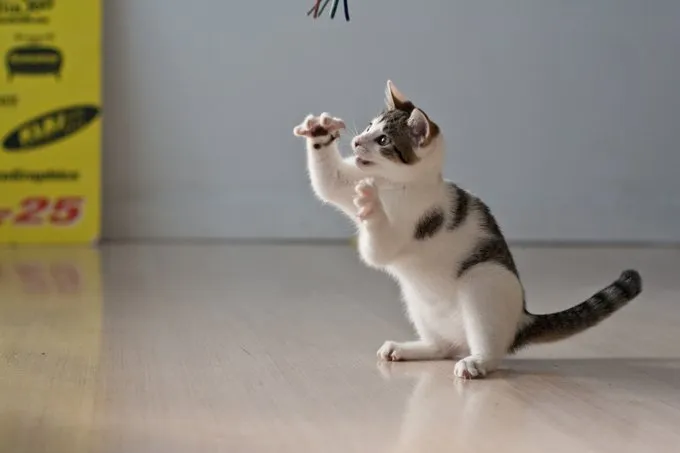Introduction
Ah, the mysterious feline, with its elegant grace and enigmatic aura. Cats have been our companions for centuries, captivating us with their independent nature and charming antics. Yet, amidst the purrs and playful pounces, there’s a contentious topic that often arises: declawing. This procedure, which involves the surgical removal of a cat’s claws, has sparked heated debates among pet owners, veterinarians, and animal advocates. But why do people opt to declaw their beloved feline friends? Let’s delve into this complex issue from the perspective of animal experts.
Understanding Declawing: What Is It Exactly?
Before we explore the reasons behind declawing, it’s crucial to understand what the procedure entails. Contrary to popular belief, declawing isn’t just a simple trimming of a cat’s nails. It’s a surgical amputation of the last bone of each toe, akin to cutting off a human’s fingers at the last knuckle. Ouch!
The Myth of Convenience: Debunking Misconceptions
One of the primary reasons people cite for declawing their cats is convenience. They believe that by removing their cat’s claws, they’ll protect their furniture and themselves from scratches. While it’s true that declawing can prevent scratching-related damage, it’s essential to weigh this against the potential consequences for the cat.
The Painful Truth: Understanding the Physical and Emotional Impact
Declawing is a painful and invasive procedure that can have long-lasting effects on a cat’s physical and emotional well-being. Not only does it involve amputation, but it also alters the way a cat walks and balances, leading to chronic pain and discomfort. Additionally, cats rely on their claws for grooming, stretching, and self-defense. Removing this essential tool can leave them feeling vulnerable and stressed.
The Behavioral Fallout: Unraveling the Consequences
Aside from the physical repercussions, declawing can also lead to behavioral issues in cats. Without their claws, cats may resort to biting as a means of defense, resulting in an increase in aggressive behavior. Moreover, declawed cats may experience litter box aversion due to the pain associated with scratching in the litter.
The Human Factor: Addressing Owner Concerns
So, why do people still choose to declaw their cats despite the risks and ethical concerns? Well, it often boils down to misconceptions and lack of awareness. Some owners may genuinely believe that declawing is the only solution to their cat’s scratching habits, unaware of alternative methods such as regular nail trimming, providing scratching posts, and using deterrents like double-sided tape or citrus sprays.
Navigating Legal and Ethical Landscapes: Insights from Government Bodies
In recent years, there has been a growing recognition of the ethical implications of declawing. Several countries, including Australia, New Zealand, and most European nations, have banned or severely restricted the practice. In the United States, some states and cities have also enacted legislation to prohibit or regulate declawing. These measures reflect a shift towards prioritizing animal welfare and promoting more humane alternatives.
The Role of Veterinary Professionals: Advocating for Cats’ Well-being
Veterinarians play a crucial role in educating pet owners about the consequences of declawing and promoting alternative solutions. Many veterinary associations, including the American Veterinary Medical Association (AVMA) and the Canadian Veterinary Medical Association (CVMA), oppose the routine declawing of cats and emphasize the importance of providing comprehensive information to clients.
Empowering Pet Owners: Encouraging Informed Decision-Making
As responsible pet owners, it’s essential to educate ourselves about the needs and behaviors of our feline companions. By understanding the natural instincts of cats and providing them with appropriate outlets for scratching and stimulation, we can create a harmonious living environment for both pets and humans.
Conclusion: Paws for Thought
In the ongoing debate surrounding declawing, it’s crucial to consider the welfare of the cats involved. While it may seem like a quick fix for scratching-related issues, declawing comes at a significant cost to the physical and emotional health of our feline friends. As advocates for animal welfare, let’s strive to promote alternatives to declawing and ensure that cats are treated with the respect and compassion they deserve. After all, a happy cat means a happy home!
So, the next time you’re tempted to reach for the declawing option, just remember: there’s more than one way to save your furniture without sacrificing your cat’s well-being. Let’s keep those claws intact and celebrate everything that makes our feline friends truly special!
- Best Dun & Bradstreet (DNB) Alternatives for 2025 - April 19, 2025
- Best 6sense Alternatives for 2025 - April 18, 2025
- Best Instantly.ai Alternatives for 2025 - April 18, 2025



